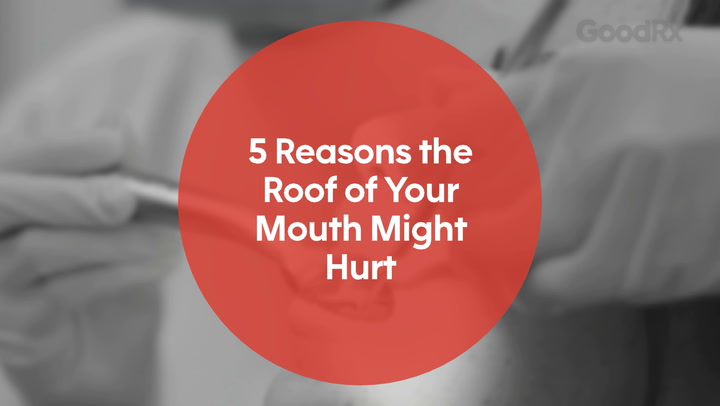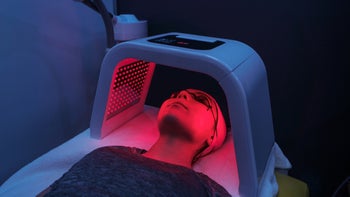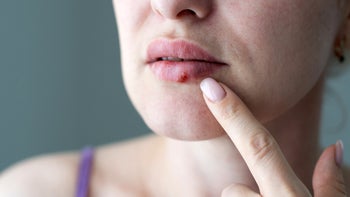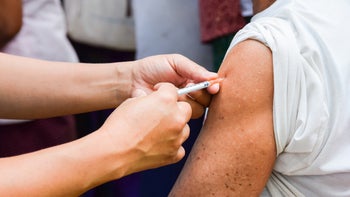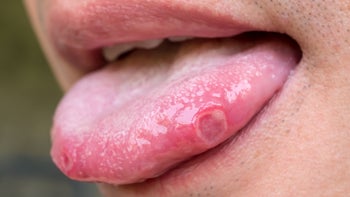
What Are the Chances of Getting Herpes From an Infected Partner?
Key takeaways:
Genital herpes is a very common infection. You can get herpes from an infected partner even if they don’t have active symptoms or sores.
Herpes transmission rates vary based on a lot of factors. In heterosexual couples, women are more likely to get infected from a man. Transmission rates from a woman to a man are lower.
It’s best to avoid sexual intercourse during a herpes outbreak. When your partner doesn’t have active symptoms, lower your risk of herpes transmission with antiviral medication and condoms.
Access savings on related medications
Table of contents
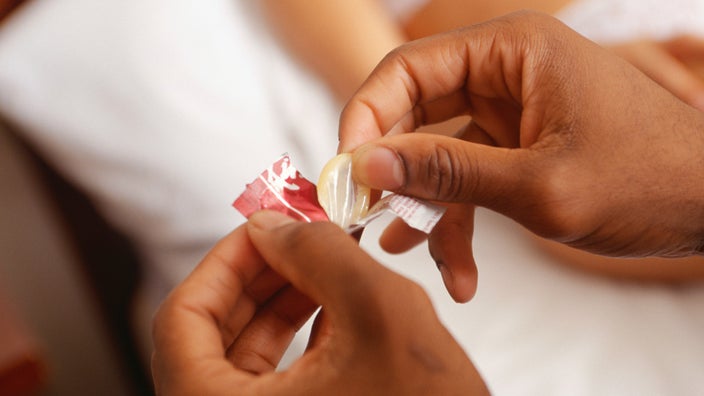
There are more than half a million new cases of genital herpes in the U.S. every year, according to the CDC. Worldwide, more than 1 in 5 people ages 14 to 49 have genital herpes.
Most people with genital herpes have no idea they have it. And people can transmit the virus even when they don’t have active symptoms. This means you can get the herpes simplex virus (HSV) even if your partner doesn’t have actual sores on their genitals. So, it’s important to understand how transmission works. This way, you can reduce your chances of getting herpes if your partner is infected.
How is herpes transmitted?
There are two types of herpes viruses that can cause genital herpes: HSV type 1 and HSV type 2 (HSV-1 and HSV- 2). Each one spreads a little differently. HSV-1 is responsible for most cases of oral herpes, while HSV-2 most commonly causes genital herpes. But this isn’t a hard and fast rule.
Search and compare options
Herpes is generally transmitted through direct contact with the virus or with someone who has the infection. But this can happen in a few different ways. And it is possible to get genital herpes without having sex.
Genital herpes can be transmitted by:
Sexual intercourse with someone who has the virus, even if they have no visible signs
Any type of direct contact with herpes sores
Contact with saliva, genital fluids, or mucous membranes (like the mouth or vagina) from someone who has the virus
Many people with herpes don’t know they have it. In fact, estimates show that more than 87% of people with an HSV-2 infection are never diagnosed.
What are the chances of getting herpes from an infected partner?
This is a difficult question to answer. The chances of getting herpes from your partner depends on these factors:
The type of sex you have
Whether active genital lesions are present
Condom use
The frequency of sex acts
Whether the susceptible partner has a weakened immune system
Whether the partner with the infection is taking antiviral therapy
Can you have herpes without knowing it? Yes. In fact, most people who are infected have no idea. Here’s what you need to know to protect yourself.
Herpes outbreak timeline: We walk you through how long a herpes outbreak lasts, including when you’re most contagious.
Can you get herpes from a toilet seat? It’s impossible to get genital herpes from a toilet — almost. We explain the details of surface transmission of herpes.
Most research on HSV transmission comes from studies on heterosexual couples, so we’ll go through some of those details next. More research is needed to understand how transmission rates differ in same-sex or transgender couples.
What’s the herpes transmission rate among heterosexual couples?
In heterosexual couples, women are more likely than men to get herpes from an infected partner. In other words, a man is more likely to transmit the virus to a woman than vice versa.
The risk of transmission seems to vary across studies, but most estimates range between 3% and 10%:
A small study found that men transmitted herpes to women 3 times per 100 unprotected sex acts.
Another study found that almost 10% of female partners acquired herpes from an infected male partner within a year.
A large study published in The New England Journal of Medicine found that the risk of getting herpes from an infected partner was 3.6% over the course of 8 months. But it’s unclear how many couples in the study used condoms.
What are the chances of getting herpes from a woman?
There isn’t good data on herpes transmission rates from a woman to a man. But we do know that genital herpes is more common in women. About 1 in 5 of women have the virus, compared to about 1 in 10 of men. These rates are even higher among Black individuals.
This tells us that women are more likely than men to carry the virus. But it doesn’t tell us how often she’ll pass the virus to a male partner during sexual intercourse.
What are the chances of getting herpes with a condom?
Condom use can reduce the risk of herpes transmission:
For women, condom use can lower the risk by up to 96%.
For men, condoms reduce the risk by about 65%.
While condoms can help reduce the chance of transmission, they don’t completely eliminate the risk. The only guaranteed way to avoid the virus is to abstain from sexual contact. However, another option to further reduce the risk of spreading herpes is a daily antiviral medication. (More on this below.)
What are the chances of getting herpes from oral sex?
Although less common, you can get herpes from oral sex. Both HSV-1 and HSV-2 can cause genital herpes. So, you can get genital herpes if you have oral sex with someone who has oral herpes. The exact transmission rates are unknown.
People with weakened immune systems can also get herpes in the esophagus (the tube connecting your mouth to your stomach) from contact with HSV in the genital region.
What are the chances of getting herpes from a partner on HSV medication (valacyclovir)?
While there’s no cure for HSV-2, there are medications that can decrease the length and severity of outbreaks. Some people also take daily valacyclovir (Valtrex) treatment to reduce asymptomatic shedding and lower the risk of transmission.
One study looked at how daily Valtrex affected transmission rates of HSV-2. Researchers divided couples into two groups. In one group, the partner with the infection took 500 mg of Valtrex daily. In the other group, the partner took a placebo pill.
Each group had more than 700 couples. In the Valtrex group, only 14 people (1.9%) got the virus — and only 4 of them developed an outbreak. In the placebo group, 27 people got the infection. This showed that daily Valtrex reduced the chances of passing herpes to a partner.
For people who have nine or fewer herpes outbreaks per year, the dosage of Valtrex is typically 500 mg daily. The dose may be adjusted for those who have more frequent outbreaks, kidney problems, or a weakened immune system.
Even though herpes is a lifelong infection, many people have fewer outbreaks over time. This means you may be less likely to get herpes from an infected partner over time. But it’s important to know that herpes can still spread even if years pass between outbreaks.
How long does it take for valacyclovir to work?
It’s important to keep in mind that Valtrex isn’t a cure for genital herpes. And the virus can still spread through contagious lesions or shedding even while taking the medication. Daily treatment can reduce the risk of transmission, but it’s not 100% effective.
If your partner has an active outbreak (lesions or other symptoms), it’s best to avoid sexual contact — even if they’re taking Valtrex. It’s impossible to know if and when asymptomatic shedding is happening, so experts advise consistent condom use as an added precaution.
Can you have an outbreak while taking valacyclovir?
Yes. Studies show that daily valacyclovir reduces genital herpes outbreaks by 70% to 80%, but outbreaks can still happen while taking the medication. However, for many people, the frequency of outbreaks tends to go down over time.
Is Valtrex better than Zovirax or Famvir?
Valacyclovir isn’t the only medication approved to treat genital herpes. Valacyclovir (Valtrex), acyclovir (Zovirax), and famciclovir (Famvir) all appear to be equally effective for treating herpes outbreaks. Zovirax is approved only for treating initial and recurrent outbreaks.
Compared with Famvir, Valtrex appears to be more effective at suppressing viral shedding when taken daily. And of the three, Valtrex is the only one approved to reduce the transmission of genital herpes.
The bottom line
Genital herpes can be transmitted even when a person with the virus doesn’t have active symptoms or sores. It can also be spread through many different forms of physical contact — not just sexual intercourse.
Many people with HSV don’t know they have the infection. Since the virus is very contagious and common, it’s important to use condoms consistently and correctly. This can help reduce transmission if one partner has herpes.
If a partner knows they have HSV, taking a daily antiviral medication can further reduce the chances of passing it to others. But neither condoms nor antiviral medications can completely eliminate the risk of transmitting herpes to other people.
Why trust our experts?


References
Bryant Ranch Prepack. (2020). Valacyclovir hydrochloride- valacyclovir hydrochloride tablet, film coated [package insert].
Centers for Disease Control and Prevention. (2022). Sexually transmitted infections treatment guidelines, 2021: Genital herpes.
Centers for Disease Control and Prevention. (2024). About genital herpes.
Corey, L., et al. (2004). Once-daily valacyclovir to reduce the risk of transmission of genital herpes. The New England Journal of Medicine.
Margaret, A. S., et al. (2015). Effect of condom use on per-act HSV-2 transmission risk in HIV-1, HSV-2 discordant couples. Clinical Infectious Diseases.
Mertz, G. J., et al. (1992). Risk factors for the sexual transmission of genital herpes. Annals of Internal Medicine.
Office on Women’s Health. (2023). Genital herpes. U.S. Department of Health and Human Services.
Wald, A., et al. (2001). Effect of condoms on reducing the transmission of herpes simplex virus type 2 from men to women. JAMA.
Wald, A., et al. (2006). Comparative efficacy of famciclovir and valacyclovir for suppression of recurrent genital herpes and viral shedding. Sexually Transmitted Diseases.
World Health Organization. (2024). Over 1 in 5 adults worldwide has a genital herpes infection – WHO.




